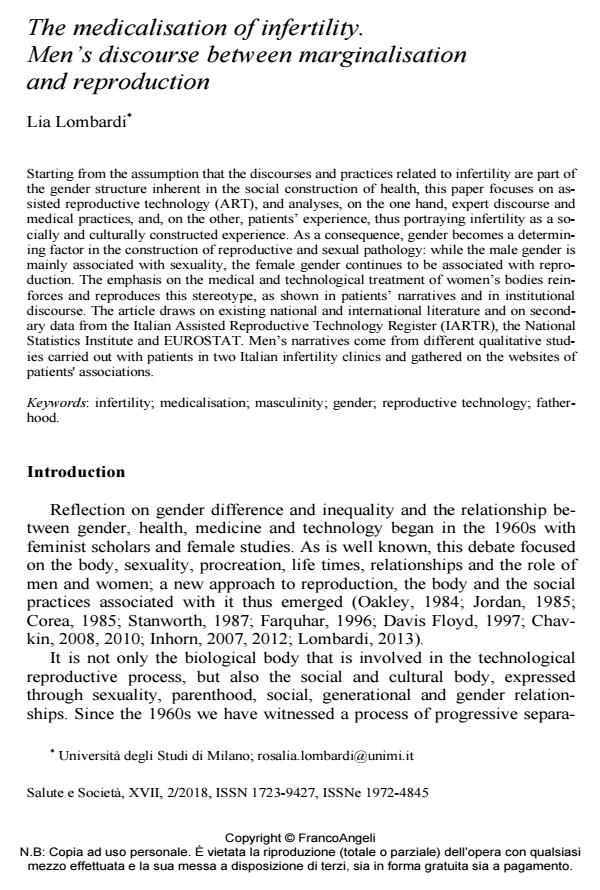The medicalisation of infertility. Men’s discourse between marginalisation and reproduction
Journal title SALUTE E SOCIETÀ
Author/s Lia Lombardi
Publishing Year 2018 Issue 2018/2
Language English Pages 16 P. 56-71 File size 93 KB
DOI 10.3280/SES2018-002005
DOI is like a bar code for intellectual property: to have more infomation
click here
Below, you can see the article first page
If you want to buy this article in PDF format, you can do it, following the instructions to buy download credits

FrancoAngeli is member of Publishers International Linking Association, Inc (PILA), a not-for-profit association which run the CrossRef service enabling links to and from online scholarly content.
Starting from the assumption that the discourses and practices related to infertility are part of the gender structure inherent in the social construction of health, this paper focuses on assisted reproductive technology (ART), and analyses, on the one hand, expert discourse and medical practices, and, on the other, patients’ experience, thus portraying infertility as a socially and culturally constructed experience. As a consequence, gender becomes a determining factor in the construction of reproductive and sexual pathology: while the male gender is mainly associated with sexuality, the female gender continues to be associated with reproduction. The emphasis on the medical and technological treatment of women’s bodies reinforces and reproduces this stereotype, as shown in patients’ narratives and in institutional discourse. The article draws on existing national and international literature and on secondary data from the Italian Assisted Reproductive Technology Register (IARTR), the National Statistics Institute and EUROSTAT. Men’s narratives come from different qualitative studies carried out with patients in two Italian infertility clinics and gathered on the websites of patients' associations.
Keywords: infertility; medicalisation; masculinity; gender; reproductive technology; father-hood
Lia Lombardi, The medicalisation of infertility. Men’s discourse between marginalisation and reproduction in "SALUTE E SOCIETÀ" 2/2018, pp 56-71, DOI: 10.3280/SES2018-002005